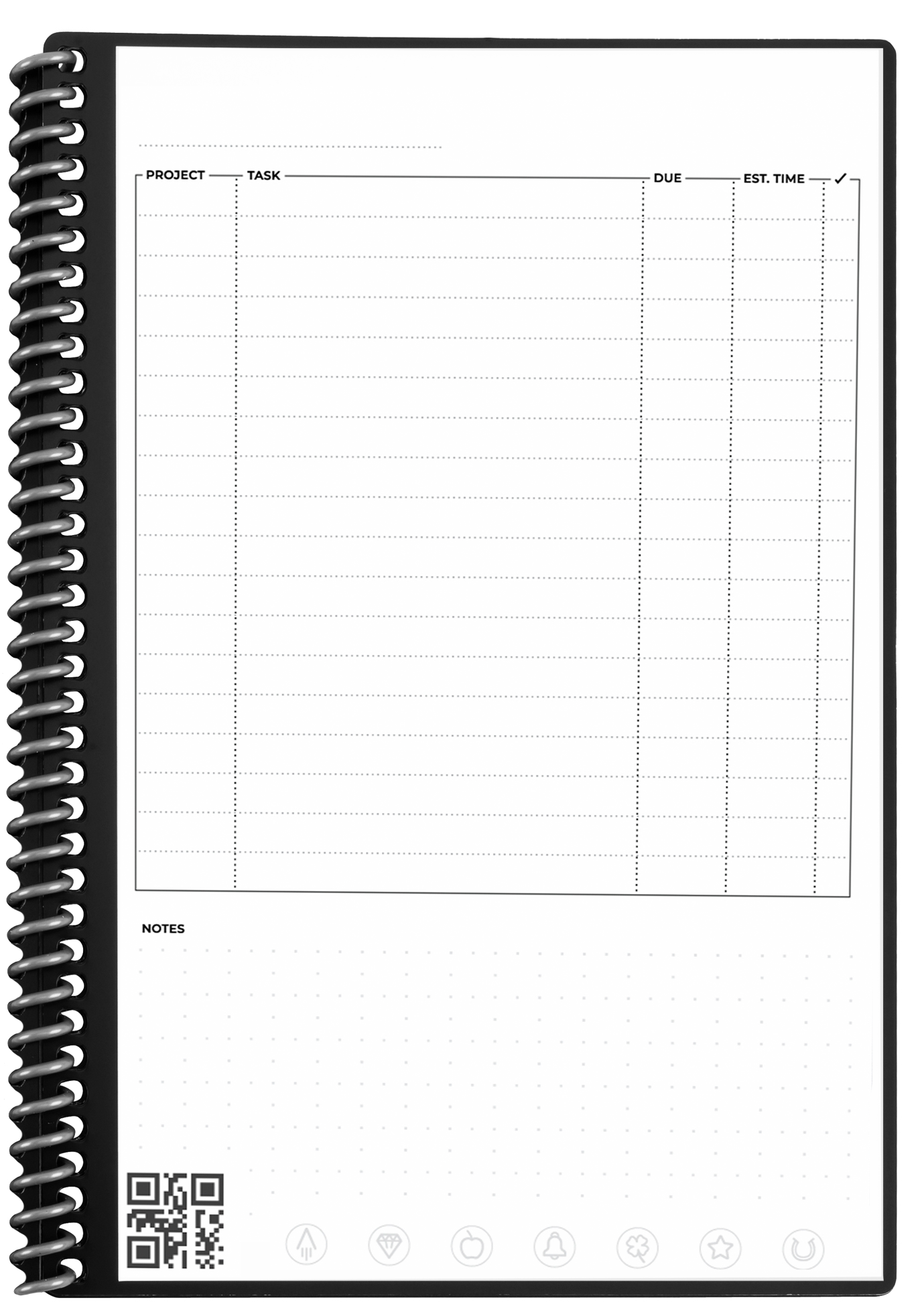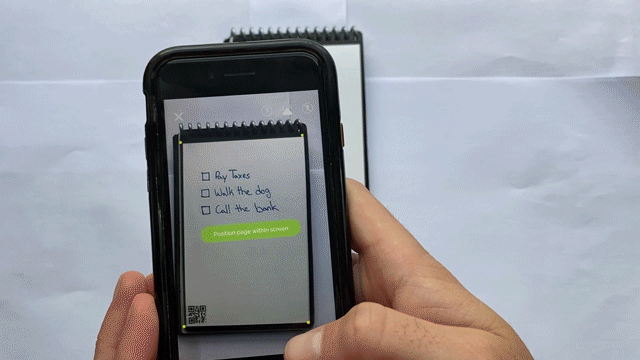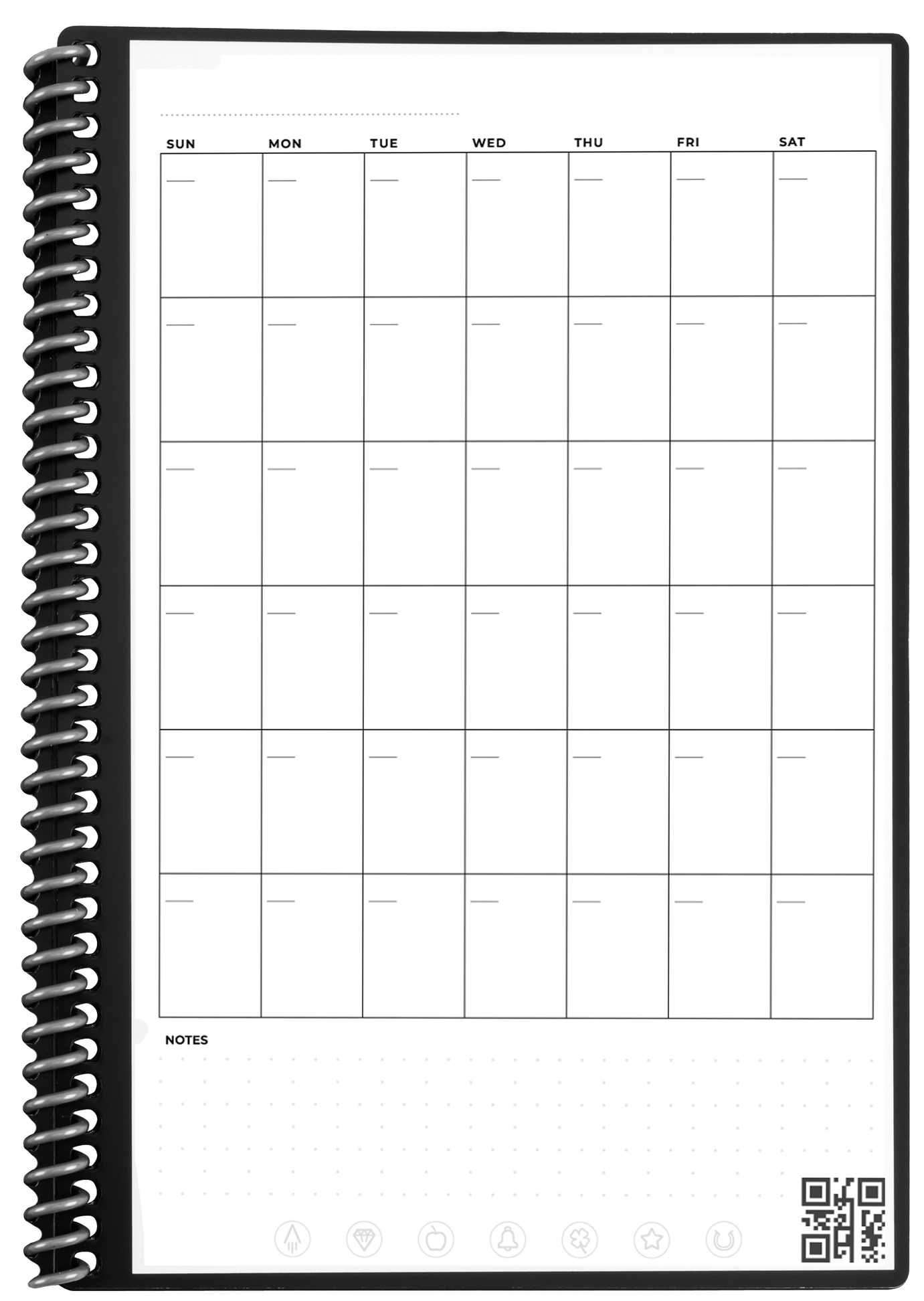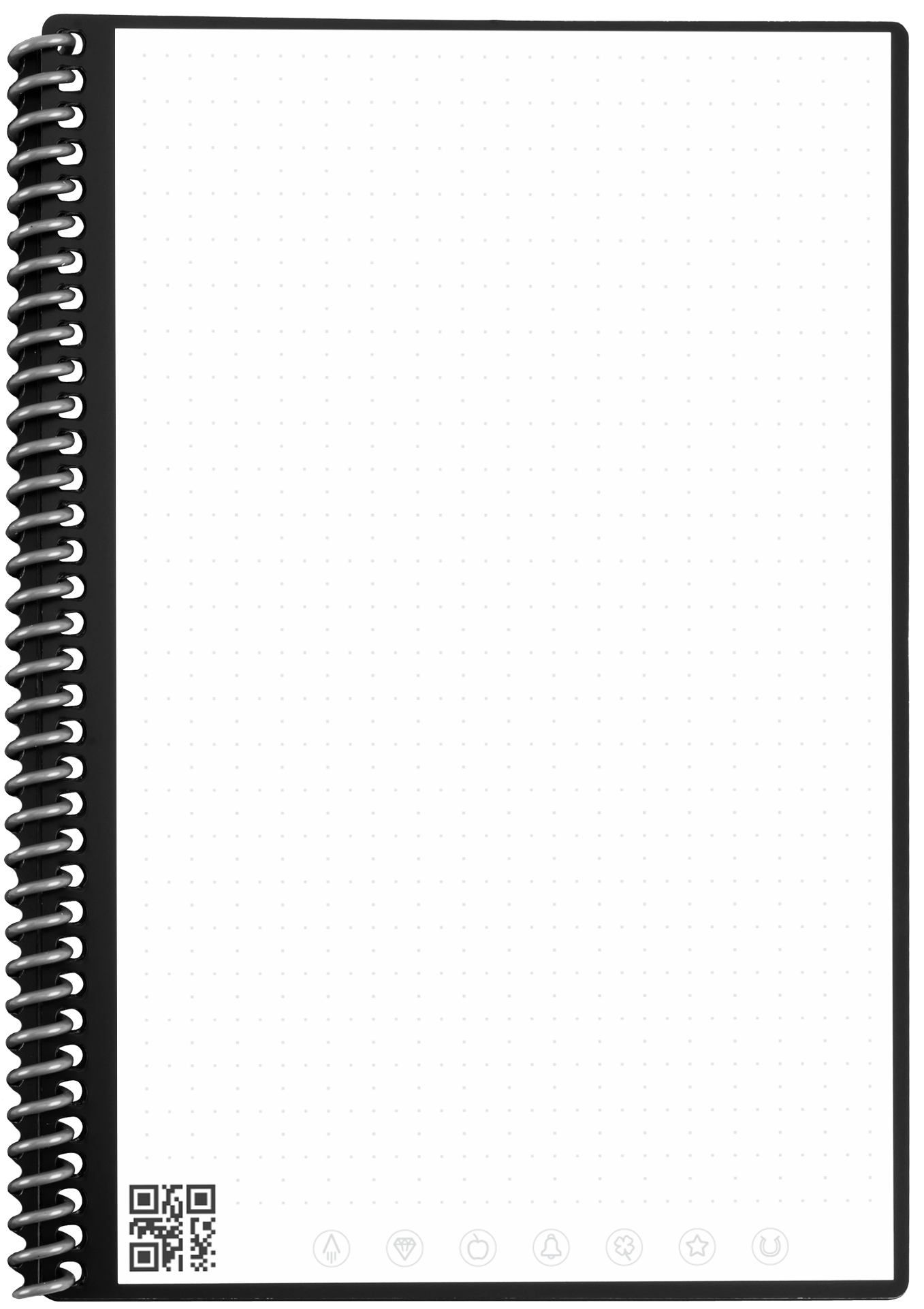The 7 wonders of the (note taking) world.
What is the Rocketbook Fusion?
The Rocketbook Fusion is an all-in-one notetaking and planning notebook. It has your typical lined and dot-grid pages in the back for all your basic note-taking needs. That means meeting notes, math diagrams, bullet journaling, doodling, habit tracking, and all other forms of writing can be done. Of course, like any Rocketbook notebook, you can scan your pages using the free Rocketbook app and you can erase your notes with water.
We have not been completely honest with you in the paragraph above. What we mean is: we have left out the most important aspect of the Fusion — it has 5 powerful planning template. Each template is designed to give you freedom in your planning (for instance an undated calendar that can be used and reused for every month of the year) while providing enough structure to promote good planning habits (for instance, a due date column on your to-do list).

With so much planning power, it can be hard to know where to start. So sit down, buckle up, and enjoy the ride as we break down every template in the Fusion and how to use them to their maximum potential:
- Project/Task Tracker
- Monthly Page
- Weekly Pages
- OKRs Page
- Ideas Page
- Lined
- Dot-Grid Pages
1. Project/Task Tracker
The Project/Task List Tracker is a to-do list with bonus features.

How To Use This Template
To-do lists are constantly changing, and so we recommend starting fresh with this template each day. Whether that means erasing the page completely is up to you. Either way, you should use the Due date column to manage which item on your list deserves priority. While it might seem unnecessary, we encourage you to label each task with the project it’s a part of — this helps you see how even small tasks are part of a larger goal and helps motivate you to complete them. Similarly, checking off completed tasks is a great way to give yourself positive feedback and a momentum boost for the next objective.
If you know Rocketbook, though, you know that we strive to bridge the analog and digital divide. So it shouldn’t surprise you that the Project/Task List Tracker has built in Smart List functionality. When you scan this page with the Rocketbook app, your task list will automatically be transformed into an interactive to-do list on your phone.

2. Monthly Page
The Monthly page has 12 months of planning in one page.

How To Use This Template
This page should be used for long-term planning. The unlabeled and undated nature of the page gives you the ability to use this page for January, February, March, April — you get the point. We recommend putting future plans (i.e. plans that are more than a month away) in the notes section. Then, once the current month has ended, you can erase the calendar portion of the page, fill in new dates for the new month, and add-in any events in the Notes section.
Or if you already use a planner, this monthly template is perfect for habit tracking. Pick a habit and simply check off each day you perform the habit. At the end of the month, you’ll have a nice view of how well you were able to keep up the habit.

Sometimes long-term planning isn’t what you need. Unfortunately the Fusion has no short term planning templates. Just kidding…
3. Weekly Pages
The Weekly Pages consist of a two-week spread for short-term planning.

How To Use This Template
These pages, like the monthly pages, are undated for a versatile planning experience. Fill out your weeks’ plans, scan, and erase for a new set of plans. These pages are especially good if your plans change often, as you can erases and reschedule easily. Additionally, the Rocketbook app is a great way to scan and share weekly schedules with coworkers, assignment due dates with students, or meal plans with your family.
Or you can use this page to write down all the plans you don’t want to do, and then wipe the page clean with water. Congrats! Now you don’t have to do any of those plans. Now that we think about it, this may not actually be a great way to use this page layout.
4. OKRs Page
The OKRs page lets you organize big goals into actionable steps.

How To Use This Template
OKRs were invented by Andy Grove at Intel and later made popular by Google as a way to measure the success of certain company goals. This page allows you to take the tool that helped turned Google into a multi-million dollar company and apply that same principle to your life.
Start by writing down your Objectives (i.e. goals). Next, uses the Key Results section to brainstorm what steps you need to take to make you Objectives a reality. The key ingredient to success here is to make your Key Results measurable. For instance, if your goal is to “Open a Time Machine Store”, a good example of a measurable Key Result would be: “Find 3 Ways to Market the Store”. An example of a vague and poorly worded Key Result would be: “Create a Great Marketing Plan”.

Finally, once your “O” and “K” sections are filled out, you can break down your next steps into very specific actionable steps. Finally, after you’ve worked on achieving your OKRs, you can reflect on how well you did or how you can adjust for next time.
5. Ideas Page
The Ideas Page gives you a chance to get creative, with a little structure.

How To Use This Template
A great way to use this page is as a daily exercise for creativity. When you wake up, make it part of your daily routine to try to fill the page with new ideas. Our co-founders tried keeping up this exercise for a week as a part of the Betterment Experiment podcast and found that while the first few ideas come naturally, ideas number 8, 9, and 10 are a struggle. Feel free to mix up the theme of your ideas each day; one day can be ideas for how to save money whereas the next day can be ideas for a new invention.
A great way to combine Fusion pages is to write down the next steps for the highest rated ideas. Then, flip back a page and turn those ideas into actionable OKRs.
6. Lined Pages
The Lined Pages offer space for some standard note taking.

How To Use This Template
You don’t need us to tell you how to use lined pages for note taking. But, this is a blog about how to use every page in the Fusion, and the Fusion has lined pages, so here we go.
Since the Fusion has some daily planning capabilities, you can use the lined pages for daily journaling or even gratitude journaling. Or revert to more standard note taking habits and use these pages for meeting minutes, essay outlines, and quick notes.
7. Dot-Grid Pages
The Dot-Grid Pages offer open-ended space for visual note taking.

How To Use This Template
If you run out of lined pages, you can use the Dot-Grid Pages as bonus note-taking space. Or you can erase the pages with water, but don’t let us tell you what to do. The Dot-Grid pages are also perfect for freeform and visual notes. Use the pages to sketch circuit diagrams, create some art, or design a floor plan.
Fuel the Notetaking Fire
Now you’ve got a nice set of tools for how to best use the Fusion for all your planning and note taking needs. As you use the Fusion, you’ll pick up your own tips and tricks to toss into your toolbox and integrate into your daily routine. Feel free to support other Rocketbook customers by joining our Facebook groups and sharing your tips and tricks.
If you have any additional questions about how to use the Fusion, email us at hello@getrocketbook.com or message us on social media.



